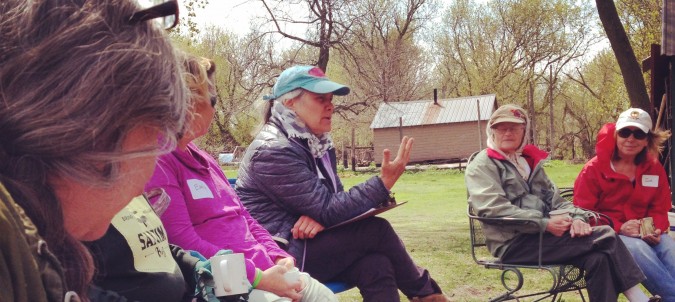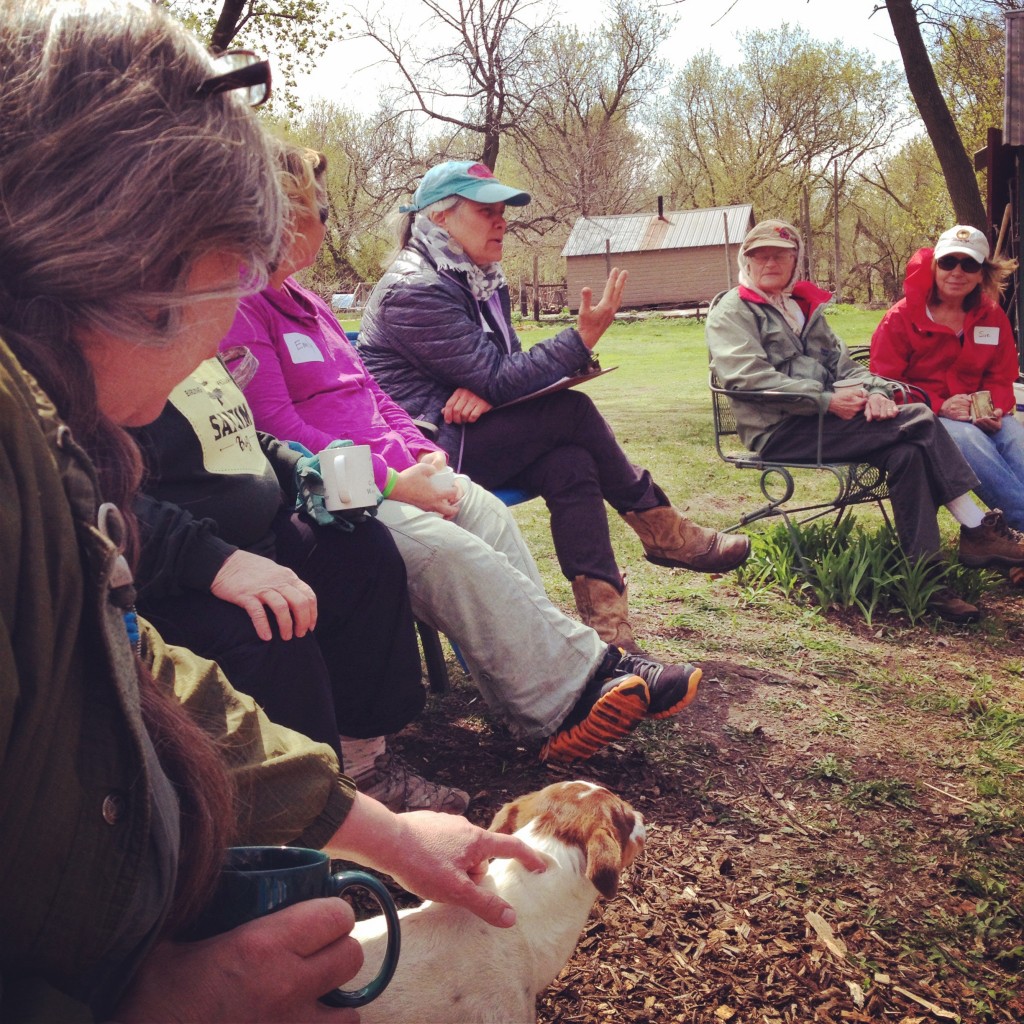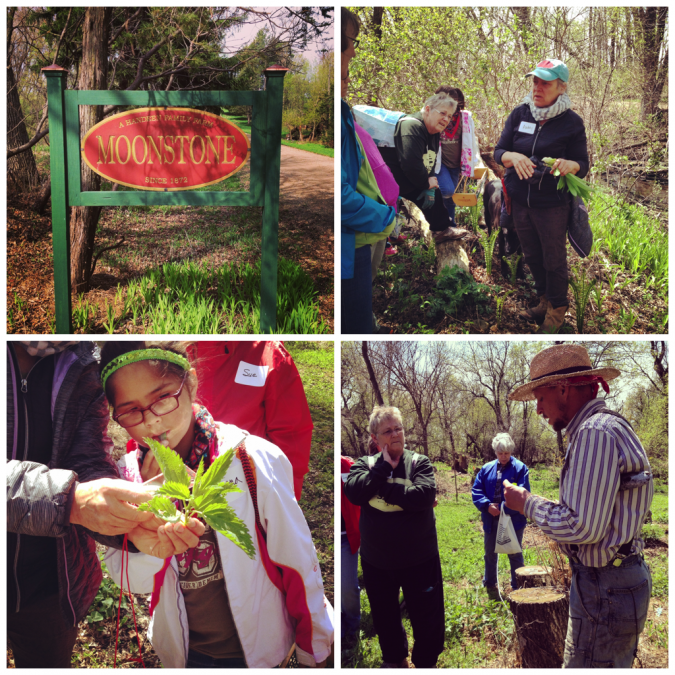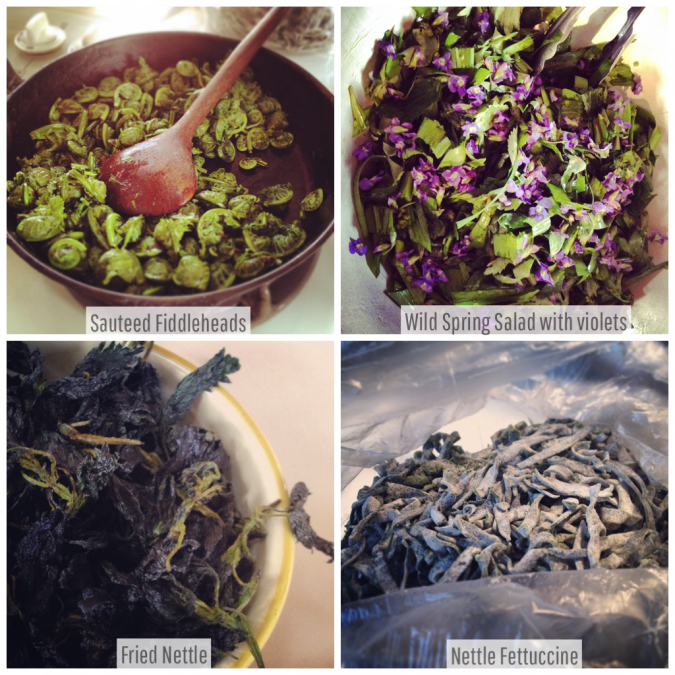As I took a seat next to 20 others in a circle around a fire on a sunny Saturday morning in May, a cup of nettle tea was handed to me as introductions and the circle talk began. Audrey Arner of Moonstone Farm began discussing the history and importance of wild foods. She started a wild foods workshop, Grasp the Nettle, to share her knowledge of wild foods foraging with others and, in return, learn more from the people who attend her workshops.
Why learn about foraging wild foods?
For me, it’s about my ongoing battle with my yard. I live in a city where lawns are expected to be grass, and only grass. However, my lawn is made up of little or no grass, just weeds such as dandelions, plantains, creeping charlie, and violets, just to name a few. In an effort to appreciate these so-called “weeds” in my small yard, I decided that maybe this workshop would help me see the light and focus more on their benefits.
Wild food is a bit of a no-brainer when it comes to how beneficial it is to your health, and it makes sense considering this method of food gathering has only recently been lost from the generations before us, before the “convenience” of the grocery store and food manufacturing and production. For thousands of years, edible weeds, flowers, and wild herbs were foraged and used as food (as well as medications); and they provided all the vitamins, minerals, and other nutrients required for the human body to maintain good health. Basically, foraging for food used to be the way to survive.
After the circle talk, we walked as a group, with Audrey leading the way around Moonstone to identify species of plants that are safe to eat and to learn the methods of harvesting each species. As we walked up to a hillside full of daylilies, Audrey explained to us how every part of the day lily is edible, including its roots, leaves, and flowers. I heard a lot of “What? I can eat my daylilies?!” including from myself. Other species we identified were ramps, plantains, creeping charlie, cattail, and of course, nettle, just to name a few.
The real hands-on learning began as we split up into teams based on different menu items. I joined the Nettle Fettuccine with Fiddleheads Team and went out to forage for Fiddleheads. Fiddleheads are the tightly coiled tips of the fern, usually the ostrich fern, available only in early spring. The lunch menu was full of dishes I have never heard of before: Nettle fettuccine with fiddleheads, wild rice with Japanese-style burdock root, wild spring salad, spezzati (greens and eggs spun in broth), dandelion fritters and elderberry cornbread with this spring’s maple syrup. Each team learned how to cook the menu item they were responsible for with the freshly picked foraged ingredients they had collected. Then, for the best part, we all sat around the food to marvel at how beautiful the dishes turned out and to eat together.
All of your senses come into play
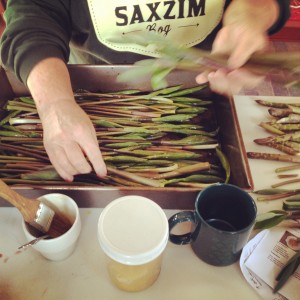 There is no better way to learn about the beneficial elements of the edible weeds and/or plants that are in your yard than to experience them first-hand using all of your senses along with someone who knows what they are talking about. It does take some practice to be able to identify edible species correctly, so do not randomly taste unidentified wild foods unless you are sure they are edible.
There is no better way to learn about the beneficial elements of the edible weeds and/or plants that are in your yard than to experience them first-hand using all of your senses along with someone who knows what they are talking about. It does take some practice to be able to identify edible species correctly, so do not randomly taste unidentified wild foods unless you are sure they are edible.
So don’t get me wrong, I will still be slaving away this summer at the mercy of my weeds, but this time, I’m not going to worry about them too much. I’m going to appreciate the beauty and benefits each of them brings to my yard. Also, if we ever find ourselves in the midst of a horrible food crisis, I’ll have my abundance of dandelions to munch on, and maybe I’ll even share.

